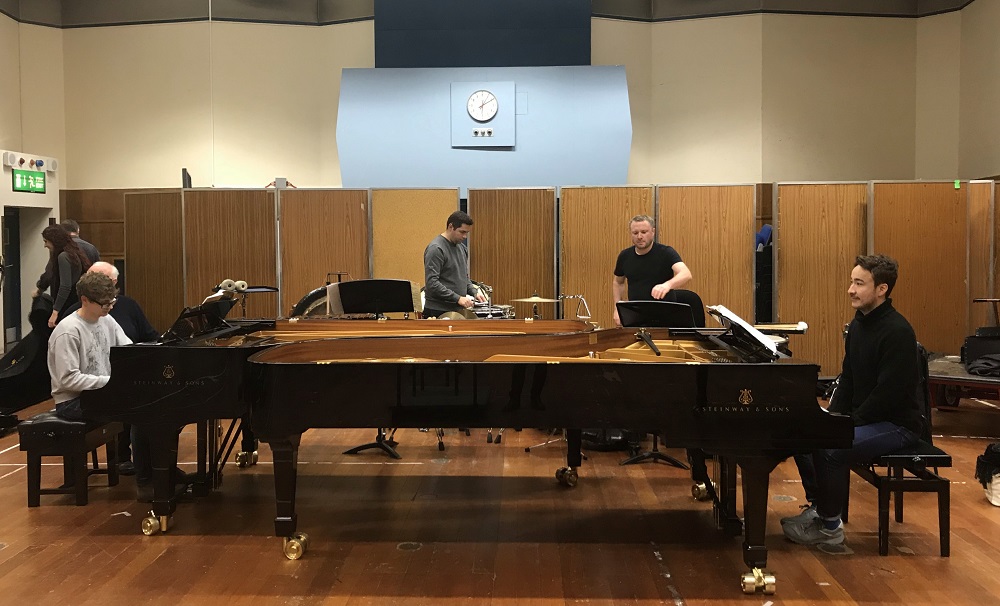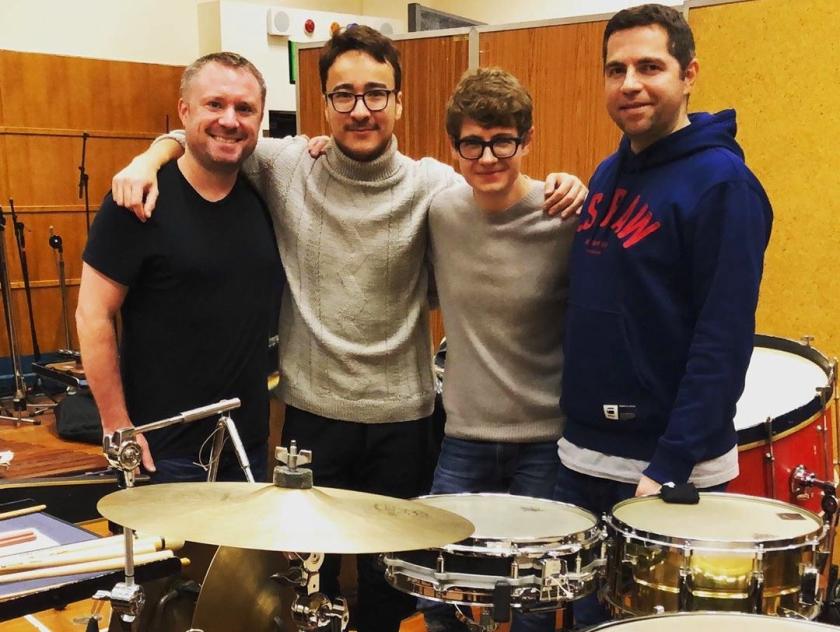Fine-tuning piano sound to Wigmore acoustics can elude even the greatest. Add a second Steinway and a wide range of percussion instruments, and the risks would seem to be hugely increased. So it was amazing to witness what seemed like sonic perfection throughout yesterday's Radio 3 Lunchtime Concert from the back of the hall. Not only that, but a refined imagination from all four players that came as close to perfection as you could ask for. Pavel Kolesnikov, who so often seems to be associated with London’s most original concert programmes, joined up again with partner Samson Tsoy, a chameleonic duo, while Colin Currie has worked together with Sam Walton in his own percussion ensemble.
Even a risky transcription worked: Ravel's Rapsodie espagnole for two pianos – as its third-movement Habanera was originally conceived 12 years before the orchestral masterpiece – and a range of percussion kept its essence and yielded new revelations. The late percussionist Peter Sadlo's arrangement to include timpani, castanets and tambourine, inter alia, added the same colours they bring to the symphonic version, with no flashy extras but all the necessary glitter in the second and fourth movements. All you miss, perhaps, is a harp and some of those glissandi string effects with which Ravel spooks us in his finale, but the pianists’ subtlety held the mesmerising key throughout. Britten’s Two Lullabies of 1936 served as a pianos-only intermezzo, but a fascinating one; the staccato togethers-and-not-quites at the end of the first were masterly-mesmerising and the "Lullaby for a Retired Colonel" strutted its stuff like the lightest of Mahlerian funeral-march parodies.  Bartók’s Sonata for two pianos and percussion is a solitary miracle of the 20th century repertoire, albeit inspired in part by the instrumental forces of Stravinsky's Les noces – Kolesnikov and Tsoy gave a superb performance of the latter's Concerto for two pianos at the 2018 London Piano Festival – and has never seemed to me more so than in this performance (even with the likes of Kovacevich and Argerich in mind). The logic of Bartók's slow-fast first movement as it swerves from supernatural chords to bracing dance music isn’t easy to follow; with Tsoy especially relaxed in making some of it look, as well as sound, playful, you just went with the flow.
Bartók’s Sonata for two pianos and percussion is a solitary miracle of the 20th century repertoire, albeit inspired in part by the instrumental forces of Stravinsky's Les noces – Kolesnikov and Tsoy gave a superb performance of the latter's Concerto for two pianos at the 2018 London Piano Festival – and has never seemed to me more so than in this performance (even with the likes of Kovacevich and Argerich in mind). The logic of Bartók's slow-fast first movement as it swerves from supernatural chords to bracing dance music isn’t easy to follow; with Tsoy especially relaxed in making some of it look, as well as sound, playful, you just went with the flow.
Currie could stun with a single cymbal stroke, Walton with off-kilter xylophone notes. With Kolesnikov now changing places with Tsoy as first pianist (rehearsal pictured above), chord clusters and trills resonated, transitions were deft, the mixture of freedom and absolute precision, lightness and weight, jaw-dropping. It’s hard to imagine a performance of this masterpiece which would deliver the whole rainbow of effects and substance better than this. And even a recording of the event – the concert was broadcast live on BBC Radio 3 – can’t ever capture the absolute wonder of such sounds live.
- Listen to this concert for the next month on the BBC iPlayer
- Colin Currie Group play Steve Reich's Drumming at the Hayward Gallery on 5 and 6 December
- Samson Tsoy in recital at Cedars Hall, Wells Cathedral School, on 5 December
- Pavel Kolesnikov's next Wigmore Hall recital is on 3 January 2020
- More classical reviews on theartsdesk















Add comment